Table of Contents
We’ve all been there. We click through to a website we know will interest us — whether it be a news article, a video, or a blog post — and we’re immediately confronted with some kind of marketing tactic.
It could be a pop-up prompting us to subscribe to a newsletter or an ad playing before a video. It could be an influencer talking about an affiliated company or a prompt to download a free ebook in exchange for your email.
These marketing tactics are a part of the browsing experience, which has developed from being almost exclusively one-sided to becoming a proposed exchange of personal data and content.
In BuzzStream’s latest survey of 1,001 people, we teamed up with Fractl to discover the online marketing tactics Americans are happy to participate in — and which ones they avoid.
Exploring the American Email Inbox
The first thing we sought to learn more about was the American email inbox. We’re all confronted with newsletters every day — some we love more than others. And as marketers, we often cite email as the best way to reach our customers. In our survey, we learned some surprising findings:
- Two-thirds of Americans have a separate email address for “junk” mail.
- 7 in 10 people unsubscribe immediately after getting a free resource from a website.
- Almost half of people only read 25% or less of the email newsletters they receive.
- 7 in 10 people don’t give out their email address because they don’t want to be contacted by salespeople, while another 57% of people are afraid hackers will take their data.
So, the next time open rates are low, consider that you may have landed in someone’s “junk” inbox. Or maybe, if you have a high volume of unsubscribes, your audience is simply signing up for a free resource and choosing not to stick around.
Privacy Concerns
The debate about the Internet and privacy continues to be a concern for many Americans. Our survey revealed that 46% of people give a fake phone number when asked to provide their number online. We also learned that when asked to provide their name online, 36% of people use a fake one.
In addition, if you’re experiencing lower sign-ups, the barrier to entry may be too high for some consumers. Nine in 10 people have stopped filling out an online form halfway through because it asked too many questions.
Would You Rather?
We decided we wanted to pit a few advertising/marketing approaches against each other. How much more valuable is an email versus a phone number? Do people prefer to watch ads or would they rather give away some of their privacy? We learned:
- When it comes to personalization versus generic, Americans are split: 48% would rather receive personalized ads based on their browsing history, while 52% would rather see generic ads.
- Almost 95% of people would rather give their email address away instead of their phone number.
- While 7 in 10 people would rather watch a 30-second advertisement than give away their email address, 88% would do the same if asked to provide their phone number.
Social Media and Influencer Marketing
There’s a reason why influencer marketing is thriving in 2020. Our data says more than half of people have bought a product or service that they found out about from an influencer.
Almost 1 in 4 people have donated to an influencer or content creator they admire. This shows that these influencers are supporting themselves primarily through sponsorships rather than relying on their audience to pay them directly.
The most popular platform for purchasing from influencers was YouTube, followed by Facebook and Instagram.
All About Ads
Ads are typically people’s least favorite part of the browsing experience. There’s nothing worse than going to a site and being assaulted with ads — especially ones that play noise. This is probably why 61% of people use an adblocker when browsing the web.
When it comes to listening to our favorite podcasts, over half of people always skip ads and 30% of people say they sometimes do.
Using an ad-blocker isn’t always possible on some news sites that largely rely on their advertising income to support their business. 40% of people say they won’t pay for ad-free journalism. It seems the right amount to charge would be between $1 and $5 per month, as 42% of respondents from our survey said that’s how much they would pay.
The Online Marketing Tactics Americans Participate In
When something has a relatively low barrier to entry, for example sharing a Tweet or commenting on a Facebook post, people are more likely to do it. When it comes to something more involved, like attending a webinar or paying for an online course, fewer Americans partake.
The top marketing tactics that Americans will willingly participate in are sharing or commenting on a social media post and exchanging their email for free content.
People were least interested in paying for anything, whether it be ad-free content or online education.
Conclusion
As marketers, it’s important to know which tactics Americans don’t mind being subject to and which ones are a harder sell.
From our study, we learned that some people use fake names and phone numbers when filling out online forms, and some people stop filling out a form altogether when it asks too much. We learned that a lot of people skip ads when listening to podcasts, and a decent amount of people would be willing to pay for ad-free journalism. We learned that having separate email accounts for “junk” and for personal use is commonplace, and that influencer marketing seems to be effective, especially on YouTube.
We hope you take these insights into consideration when mapping out your marketing activities for the future, and of course, continue doing what you know works for your business.
Methodology and Fair Use Statement
We surveyed 1,001 Americans using Amazon’s Mechanical Turk. Our participants spanned all four generations. 45% of our participants were male and 54% were female. The data we are presenting relies on self report. No statistical testing was performed, so the claims listed above are based on means alone. As such, this content is purely exploratory and future research should approach this topic in a more rigorous way.
Our team worked hard on this study. If you enjoyed this report and would like to share it, please link back to this page in your coverage.

 End-to-end outreach workflow
End-to-end outreach workflow




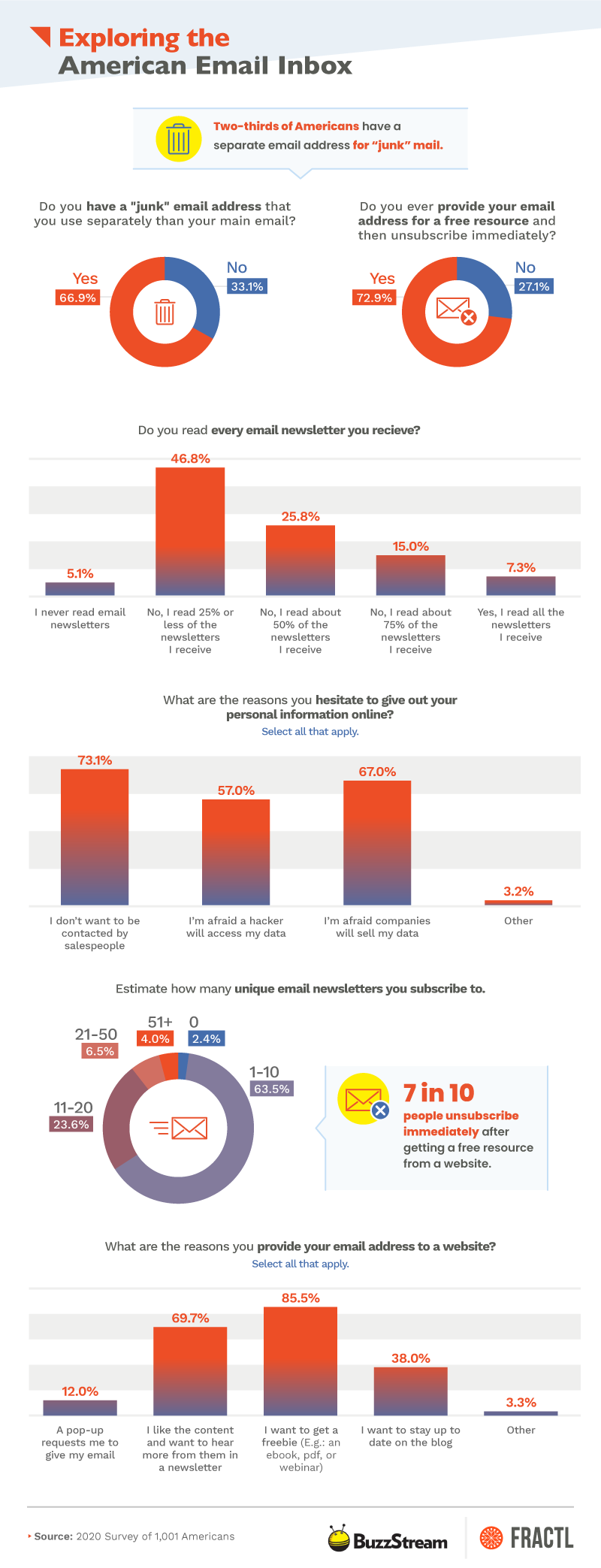
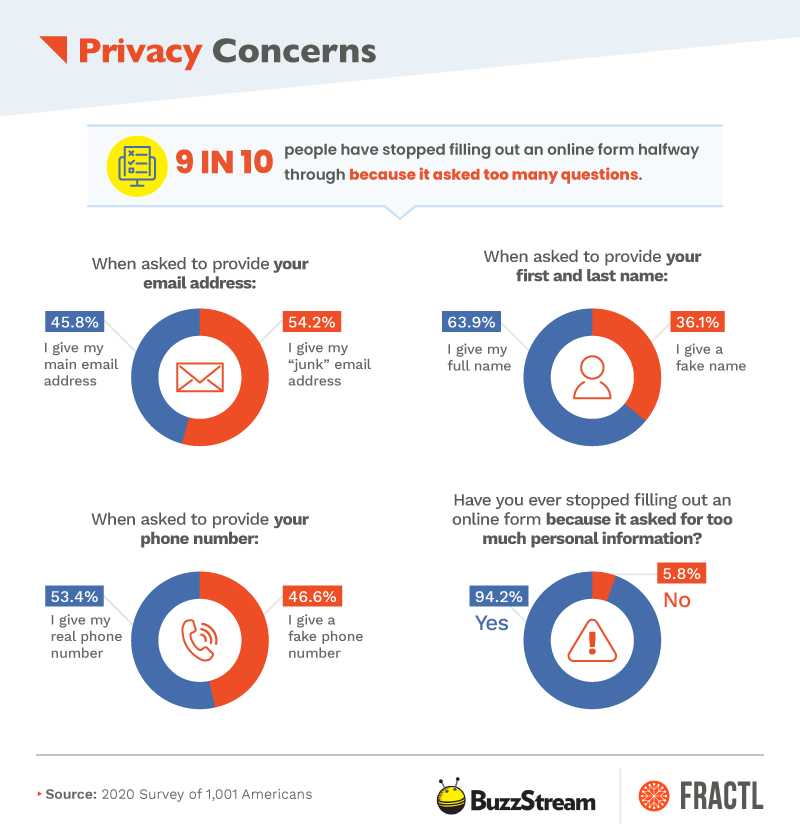
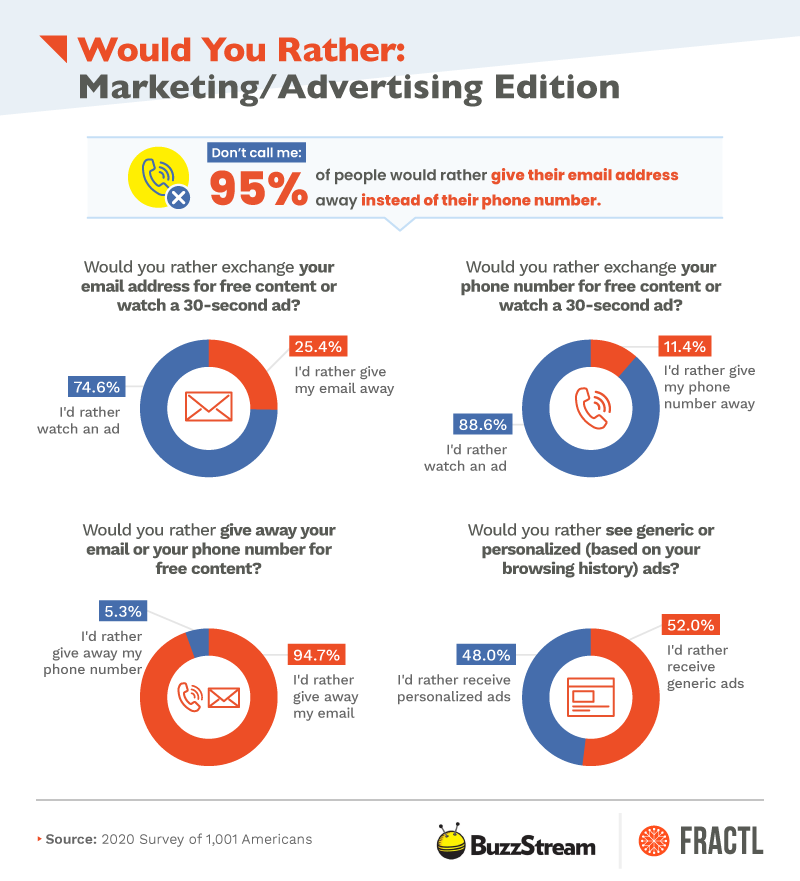
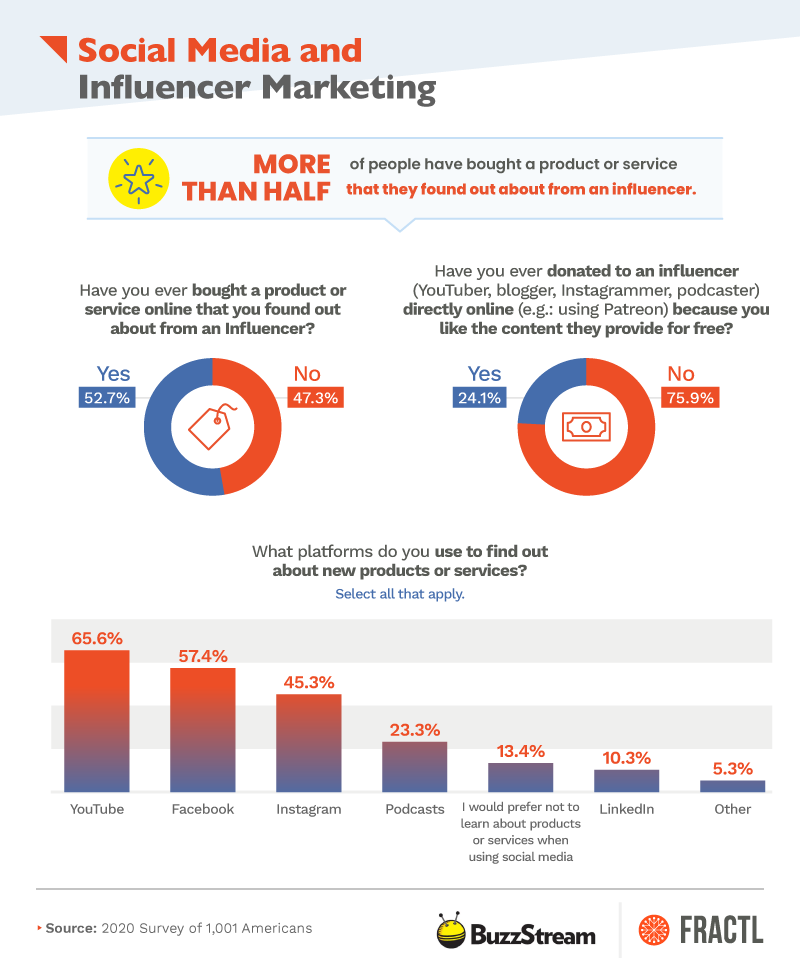
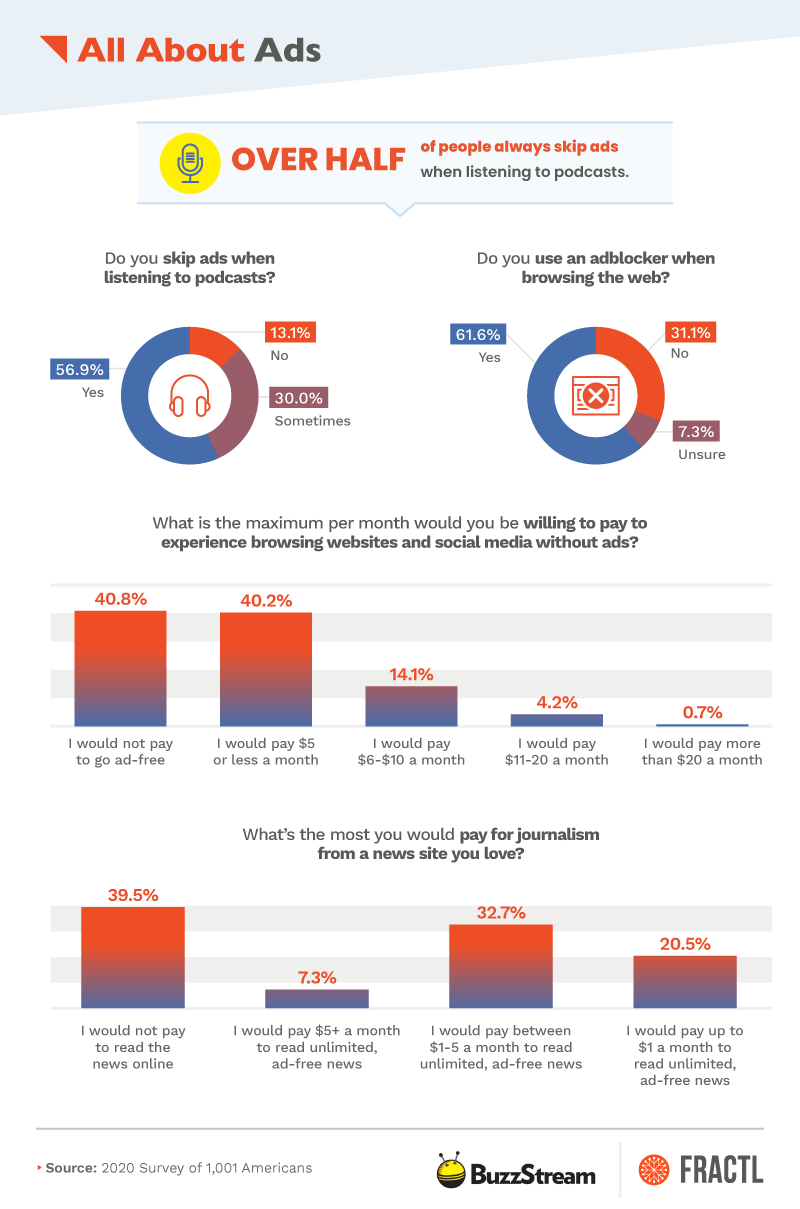
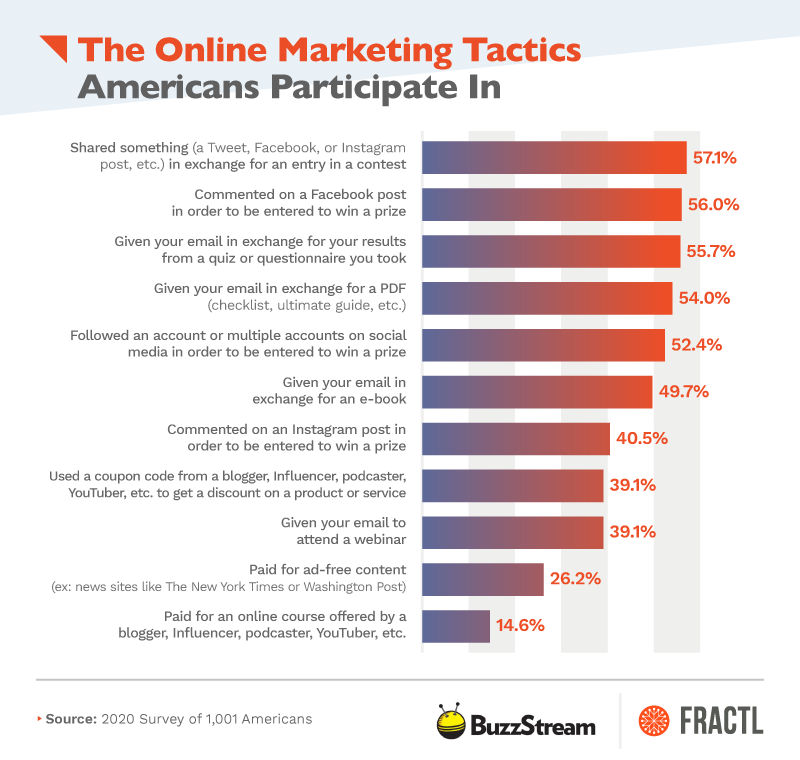
 Check out the BuzzStream Podcast
Check out the BuzzStream Podcast








1 comment
Interesting survey with some very actionable information. The most intriguing finding was the lack of preference for personalized advertising. In spite of how much effort and money goes into personalizing ads, it seems consumers are finding little value in them. It would be interesting to see a deeper dive into this topic.